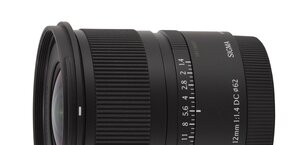Sigma A 24-70 mm f/2.8 DG DN
5. Chromatic and spherical aberration
Chromatic aberration
Even though the situation in the middle of the focal range looks very well indeed we are very surprised by the performance at 70 mm. The lens with overall as many as eight low dispersion elements didn't manage to correct longitudinal chromatic aberration - it remains visible without any problems at the maximm focal length. It is a situation definitely worse than in the case of the reflex camera version of the Sigma and the Tamron 28-75 mm. |
 |
Please Support UsIf you enjoy our reviews and articles, and you want us to continue our work please, support our website by donating through PayPal. The funds are going to be used for paying our editorial team, renting servers, and equipping our testing studio; only that way we will be able to continue providing you interesting content for free. |
- - - - - - - - - - - - - - - - - - - - - - - - - - - - - - - - - - - - - - - - - - - - - - - -


It would be difficult to talk about any slip-ups here because the results never exceed 0.09% and, in our scale, from that point start medium values. You might say lateral CA remains low across the whole aperture range and throughout all focal lengths. Such results are a tad better than those of the Tamron 28-75 mm which sometimes reached 0.11% and noticeably better than the results of the Sigma A 24-70 mm f/2.8 DG OS HSM which could get as high as 0.15%.
| A7R II, RAW, 45 mm, f/16.0 | A7R II, RAW, 70 mm, f/16.0 |

|

|
Spherical aberration
First photos of this chapter show a slight 'focus shift' effect but only at the 70 mm focal length - as you pass from f/2.8 to f/4.0 the depth of field moves slightly toward greater distances. One glance at circles of light we got before and after the focus and it's obvious that the intensity of their outer rim differs a lot. Both these features suggest that, at least at longest focal lengths, spherical aberration hasn't been corrected perfectly well.For a change at 45-50 mm focal length the differences in appearance of the circles are noticeably less pronounced and the „focus shift” effect - practically imperceptible. It seems at that place there are practically no problems whatsoever with correction of spherical aberration.
| A7R II, 50 mm, f/2.8, in front of | A7R II, 50 mm, f/2.8, behind |

|

|
| A7R II, 70 mm, f/2.8, in front of | A7R II, 70 mm, f/2.8, behind |

|

|






